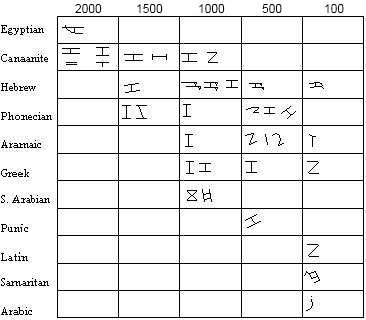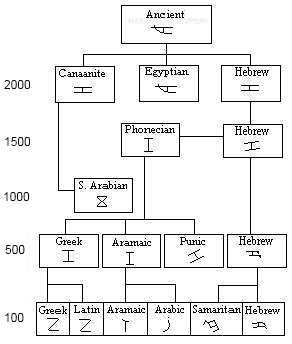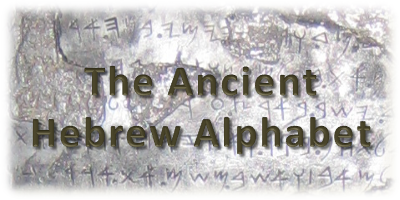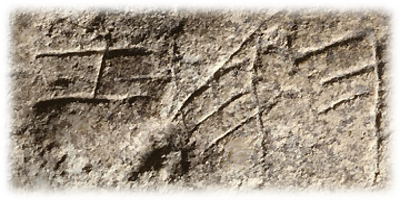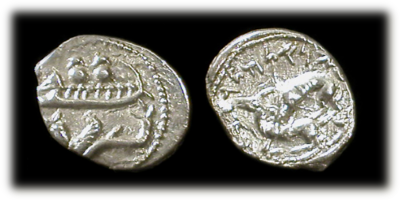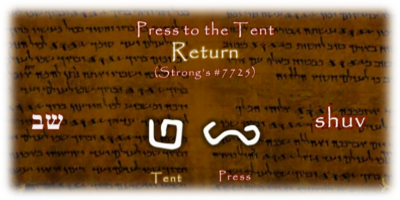History & Reconstruction
The ancient pictograph for this letter,  , is some type of agricultural implement similar to a mattock or plow. The meanings of this letter are "harvest," "food" as from the harvest, "cut" from the function of the implement and "broad" from its shape.
, is some type of agricultural implement similar to a mattock or plow. The meanings of this letter are "harvest," "food" as from the harvest, "cut" from the function of the implement and "broad" from its shape.
The Modern Hebrew name for this letter is zayin but was originally the parent root zan. When the Greeks adopted the letter its name was originally zan, but later became zeta, the modern name for this letter in the Greek alphabet.
The phonetic sound for this letter is a "z" as it is in Greek and Arabic.
The Early Semitic  was simplified to
was simplified to  in the Middle Semitic script, which then evolved into
in the Middle Semitic script, which then evolved into  in the Late Semitic script. This form evolved into the Modern Hebrew letter ז. The Greeks and Romans adopted this letter to become the letter "Z." The Late Semitic
in the Late Semitic script. This form evolved into the Modern Hebrew letter ז. The Greeks and Romans adopted this letter to become the letter "Z." The Late Semitic  became the number 7.
became the number 7.
 , is some type of agricultural implement similar to a mattock or plow. The meanings of this letter are "harvest," "food" as from the harvest, "cut" from the function of the implement and "broad" from its shape.
, is some type of agricultural implement similar to a mattock or plow. The meanings of this letter are "harvest," "food" as from the harvest, "cut" from the function of the implement and "broad" from its shape.
 was simplified to
was simplified to  in the Middle Semitic script, which then evolved into
in the Middle Semitic script, which then evolved into  in the Late Semitic script. This form evolved into the Modern Hebrew letter ז. The Greeks and Romans adopted this letter to become the letter "Z." The Late Semitic
in the Late Semitic script. This form evolved into the Modern Hebrew letter ז. The Greeks and Romans adopted this letter to become the letter "Z." The Late Semitic  became the number 7.
became the number 7.
